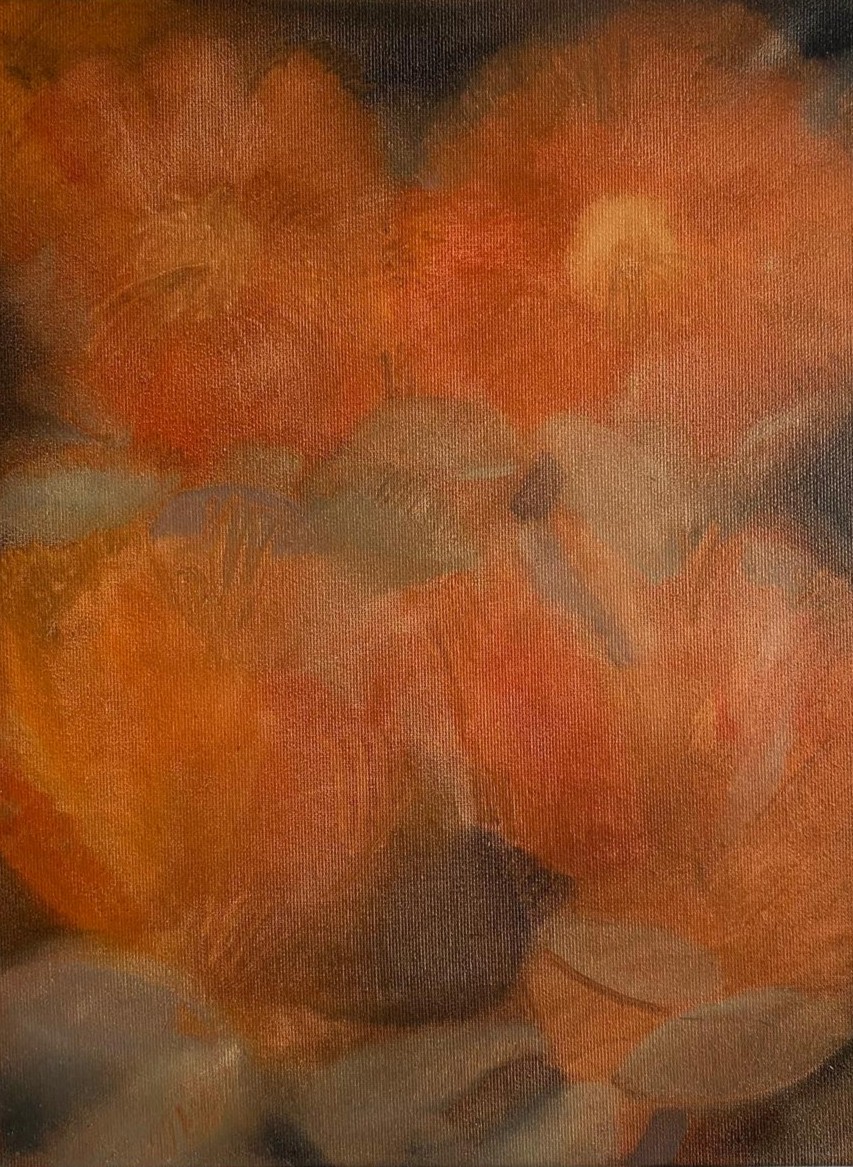
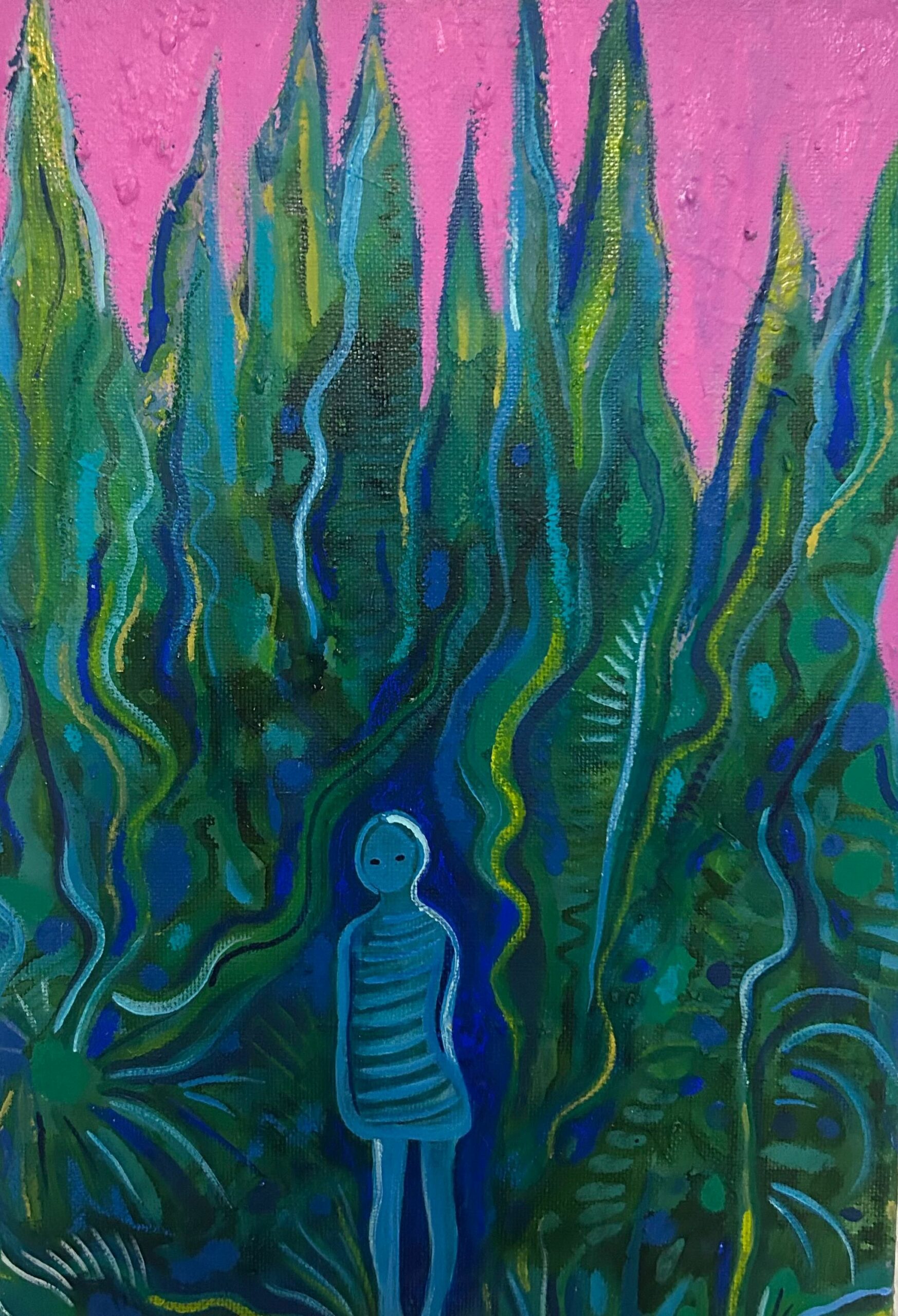
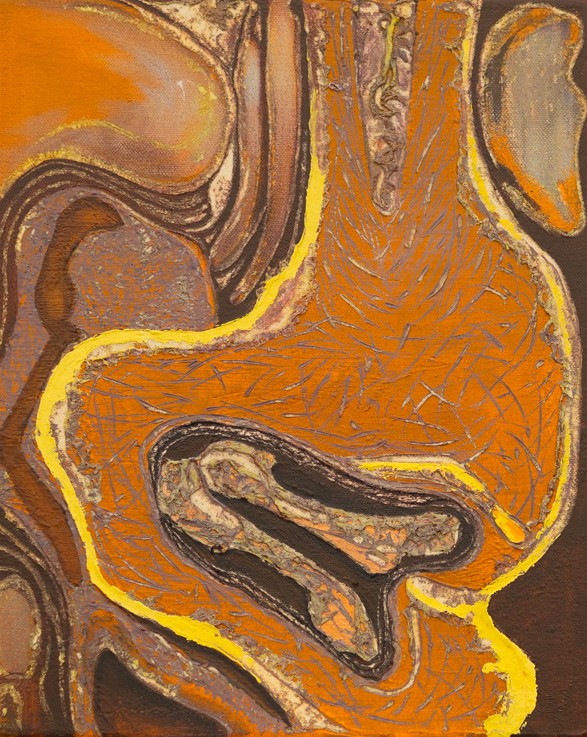
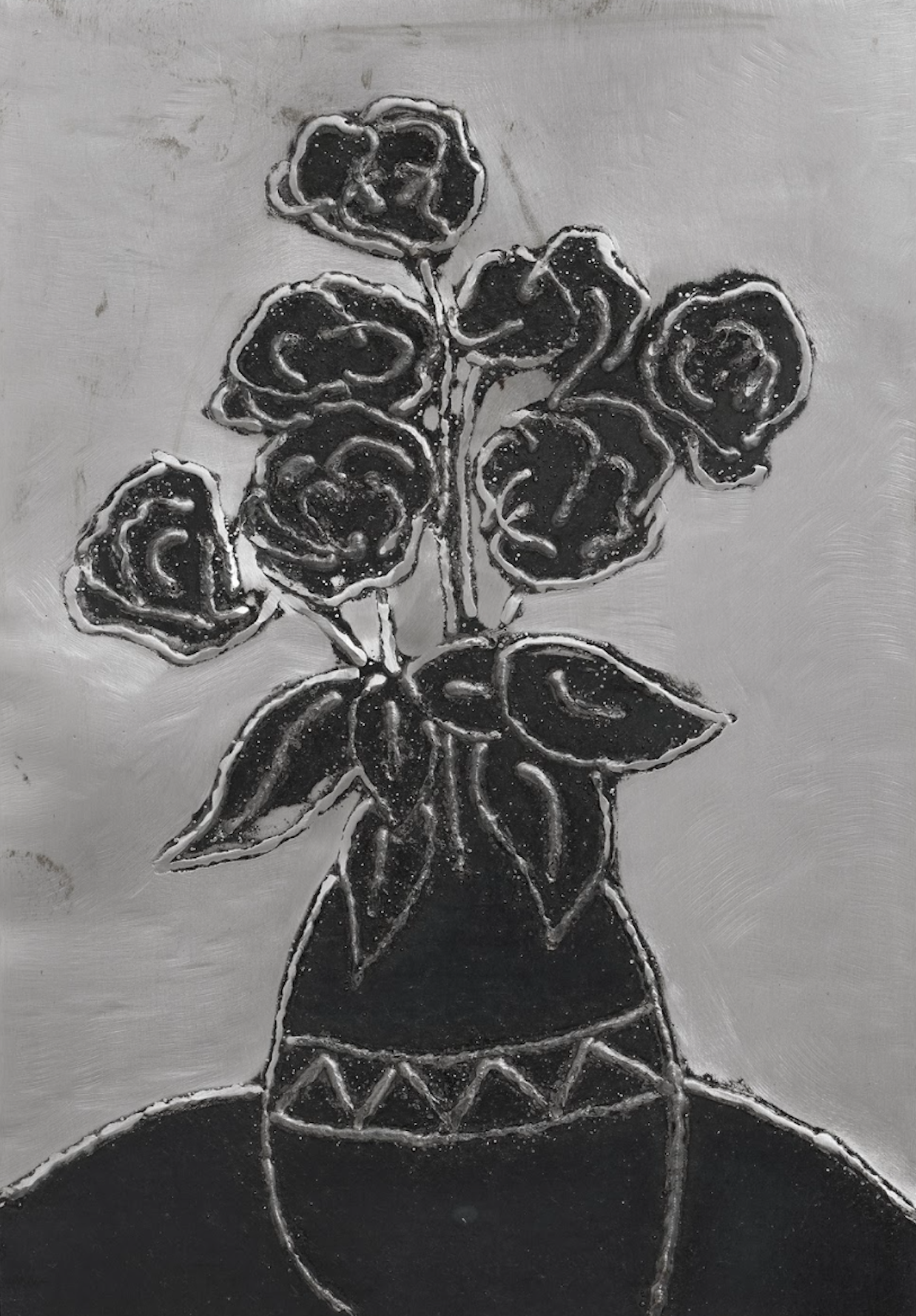
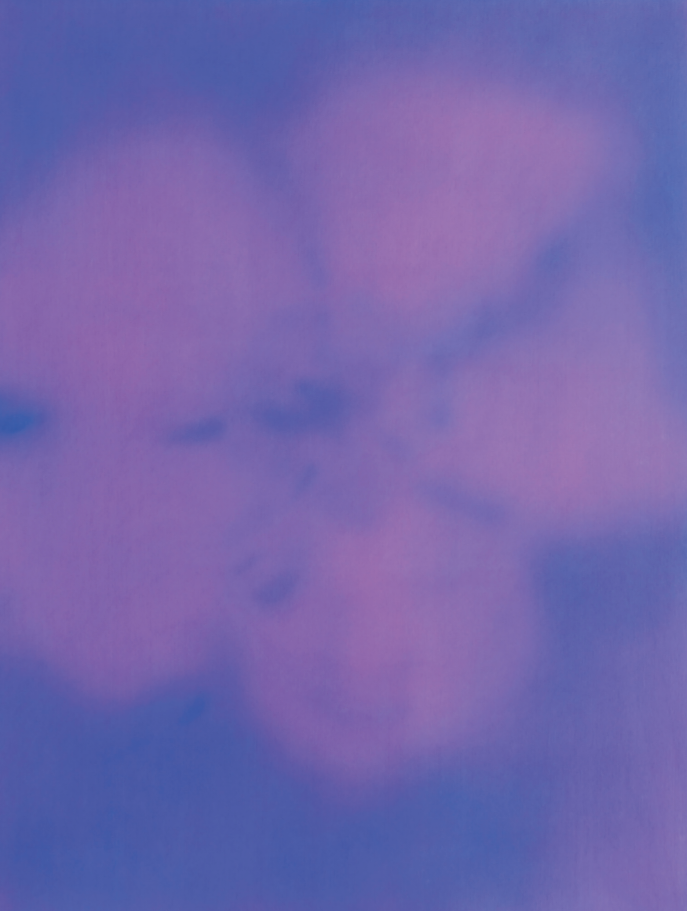
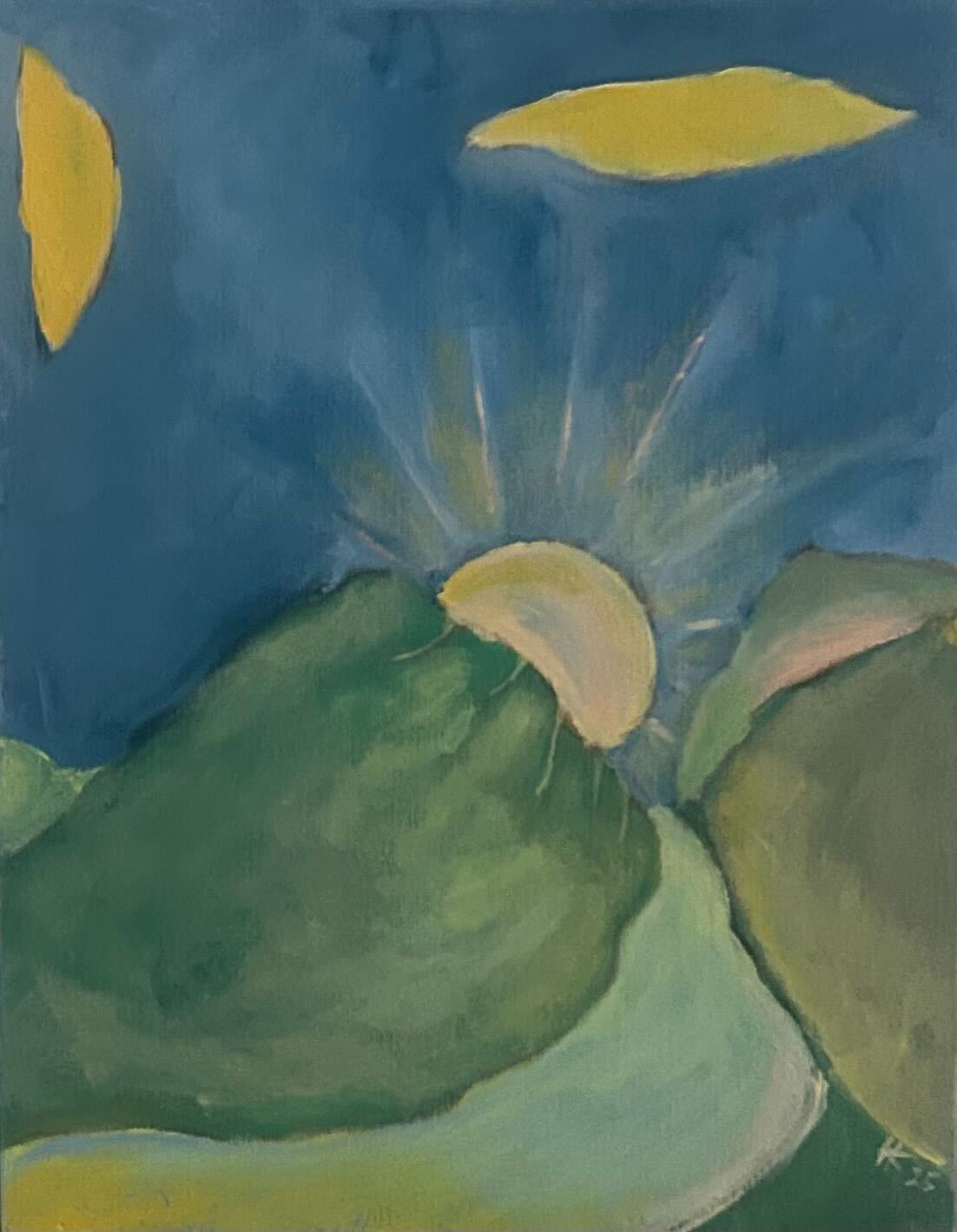
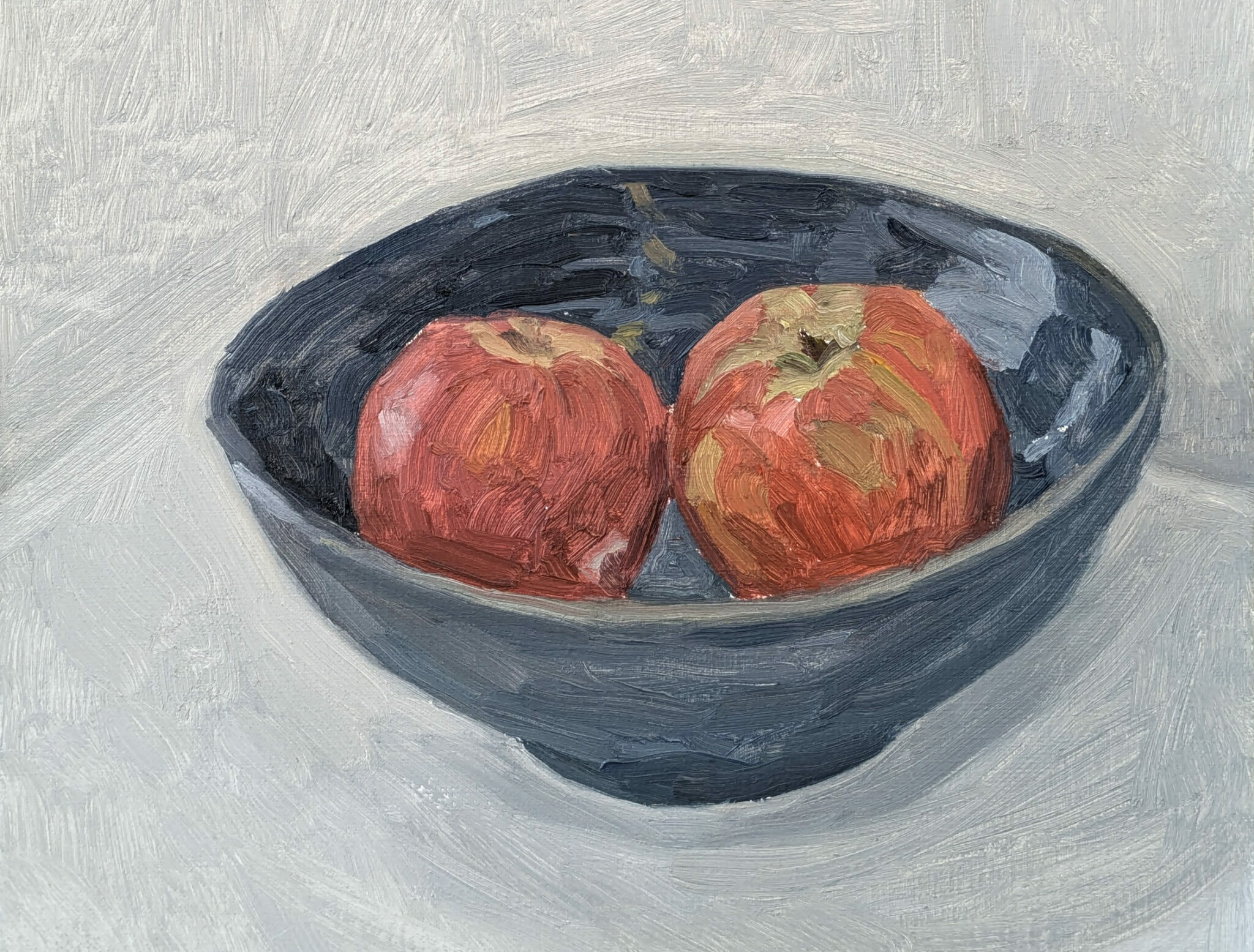







These are small things that Maxime Biou paints—things that usually pass before our eyes without our really seeing them; the necessary, ordinary objects of everyday décor, the very garments of banality. Everything we don’t really notice, in short, when we come across it anywhere but at home: a faience bowl, a potted green plant, a bouquet of flowers about to wither, a stack of soup plates whose hue blends into the piece of furniture on which they seem to have been placed by accident. A pile of anonymous books. To the point that one might be tempted to regard these recent canvases as little studies, pure exercises in style, not necessarily intended to be shown—like a pianist’s scales, meant simply to hone one’s craft or sharpen one’s eye.
Painters, for centuries, have taught us to love these trifles. Because painting, after all, is this love of insignificant things. I mean that those who love painting—those who are truly in love with it—do not expect from it any dazzling ecstasy (cinema, music, theater exist for that), but rather the quiet satisfaction of seeing, in detail, that its magic still works unfailingly. Magic meaning its ability to render more faithfully than nature itself what we thought we saw around us, but in truth did not.
For even in an epic or religious scene, it is the details that captivate and move us, far more than the letter or meaning of situations whose grandiose dramas we no longer really recall, having heard them retold so many times. It is the way a hand’s fingers curl delicately into the palm, or the play of side-light across the folds of a drapery or the ridges of an armor; it is how a mere white spot becomes a sparkling glint in the amber of an earring. And what is a painter, if not a lover of painting itself? And, with it, of the world, of every object, however humble in appearance, that he offers to our wayward gaze?
Maxime Biou, as a painter, simply turns his loving eye to what surrounds him. Where once he gave us large portraits, most often of his close ones, he now takes, like Francis Ponge, the “side of things”: subjects far more modest and silent than living beings, of which the poet wrote:
“No worries about food or shelter, no mutual devouring: no terrors, no frantic pursuits, no cruelties, complaints, cries, or words. They are not the secondary bodies of agitation, fever, and murder (...) They have no voice. They are all but paralytic. They can only draw attention through their poses. They seem unaware of the pain of unjustification.”
Yet there is a kind of neutrality in the way Biou paints these things “quite simply,” so to speak—a concern to avoid anything that might look like an effect, that is, any pose or, rather, imposture of technique that would insert itself between the painter’s eye and the object it sees. He avoids any virtuoso gesture relying on something other than the artist’s capacity to remain faithful to the sheer presence of a thing in space and in light, right there before him. That is why the thick material that once characterized his canvases, often piled on to assert the existence of certain motifs, as well as the visible brushstroke that used to show so strongly on their surface, have now grown more discreet.
What he restores—or at least attempts to restore—is a vision akin to that paradigmatic Neutral toward which Roland Barthes’ work moves (in Mythologies, in Writing Degree Zero, or in Camera Lucida, whose title could so well suit so many of Biou’s paintings): a vision, in Éric Marty’s words, “freed from any opinion, any position, even any knowledge.” A vision seeking, like Barthes with language, to strip painting of “a surplus of meaning that is also the excess of common meaning, of noisy stereotypes, of a dead, fixed sense.”
In doing so, a style emerges that recalls painters enamored of silence and quiet days, and especially of that slightly silvery light that characterizes certain places: the northern countries of Vermeer or Hammershøi (where Biou has never been), the dusty Spain of Velázquez (where he once stayed), and the Île-de-France of Fantin-Latour or Corot (where he was born and still lives). From this last master in particular, from his youth, Biou’s compositions inherit a kind of rough tenderness, an almost awkward modesty expressed in a line concerned with precision, but over which painting—through its play of colors—lays a veil of supple uncertainty.
Is it humility before the motif, or the pride of rendering it ever more perfectly—perhaps even to the point of perfection—that drives the artist to rework certain canvases, returning several times to the same object arranged in the same way? Such is the case with the green plant or the bowl, reproduced in series where one can amuse oneself by detecting, beneath the painter’s touch, the slight modulations of texture or tone distinguishing each version of the same subject. Ultimately it matters little: the aim is always neutrality, to restore to the object before him the full attention it deserves. And the act of painting becomes again what it should be: an act of devotion.
Thus, like Albers when he titles his series Homages to the Square, Biou could call his paintings Homage to the Green Plant, Homage to the Plates, Homage to the Faience Bowl. And anyone seeking to describe them would need the same cheerful humility, the same rough tenderness, to express the pleasure and the calm one finds in looking at canvases bathed in such tranquil light.
Text : Grégoire Lubineau